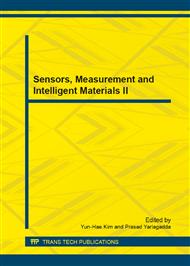p.1542
p.1546
p.1551
p.1555
p.1559
p.1563
p.1567
p.1572
p.1578
Study on Dynamic Behavior of Ancient Timber Structures Roof
Abstract:
The roof model of the palace timber buildings was established according to the construction technology of the Ying-tsao fa-shih. Based on its analysis of dynamic behavior with shaking table test and ANSYS finite element software, the dynamic behavior of structure and its maximal response under different conditions were gotten, and also the dynamic magnification factor of the beams layer and the whole structure were gotten, at last the results got by shaking table test was compared with the numerical simulation. Research shows that the nature frequency of the model is 1.486 Hz which is much bigger than that of the whole structure; the maximal displacement of beam layer gradually increases with the increase of ground motion intensity and the height of structure; the vibration isolation performance of semi-rigid tenon-mortise joints in rare earthquake (400gal) is better than that in moderate earthquake (220gal) and frequent earthquake (110gal); the dynamic magnification factor between layers was about 1, and roof 0.9 or so.
Info:
Periodical:
Pages:
1559-1562
Citation:
Online since:
December 2013
Authors:
Price:
Сopyright:
© 2014 Trans Tech Publications Ltd. All Rights Reserved
Share:
Citation:


